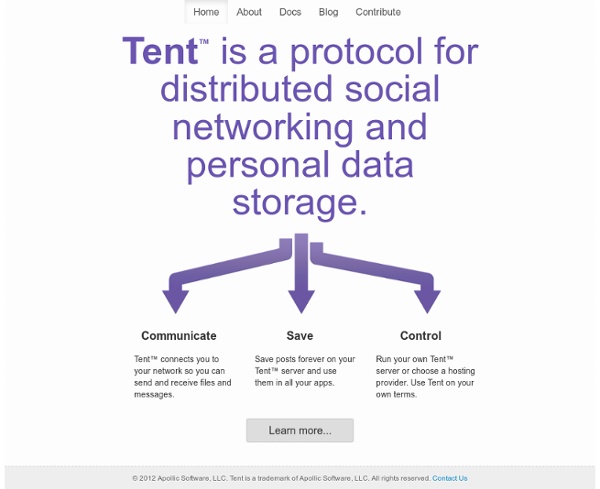



Apache ZooKeeper - Home Movim - The kick-ass social network OpenLink Data Spaces What are Data Spaces? A named structured data cluster within a distributed data network where each item of data (each "datum") has a unique identifier. Fundamental characteristics of data spaces include: Each Data Item is a Data Object endowed with a unique HTTP-based Identifier Data Object Identity is distinct from its Content, Structure, and Location (Address) Data Object Representation is delivered via structured content constrained by a Schema (in this case the Entity-Attribute-Value model) Creation, Update, and Deletion privileges are controlled by the Data Space owner. In relation to the Web, data spaces provide clustered points of access to data object; basically, they provide structured data access partitioning just as 'machine names' provide name oriented partitioning for DNS and 'table names' the same for database systems. Why are Data Spaces important? Data Spaces provide a powerful conceptual model based virtualization layer that sits atop heterogeneous data sources. News FAQs
Codiad Web Based IDE by Fluidbyte Pastec, the open source image recognition technology for your mobile apps MediaGoblin kune | A web tool to encourage collaboration, content sharing & free culture Backbone.js Programming Cloud: Introducing a Programming Revolution Battle-Tested Systems The core infrastructure of Wolfram Development Platform has been battle-tested for years in Wolfram's widely used public Wolfram|Alpha system. Maximize Programmer Productivity The knowledge-based Wolfram Language dramatically changes the economics of programming by automating many programming tasks and letting programmers start from a very high-level platform of built-in capabilities. Consulting if you Need It Wolfram Solutions has a distinguished history of providing outstanding solutions to top organizations around the world. Apply Your Own Web Code Wolfram Development Platform is set up to interoperate with standard web systems and code, supporting editing of web assets, as well as sophisticated programmatic templating of web content. Completely Scalable Code Many great businesses can be built with just the right few lines of Wolfram Language code. Automated Testing Is Built In Source Code Control Data-Science-Level Logging Infinite Interoperability